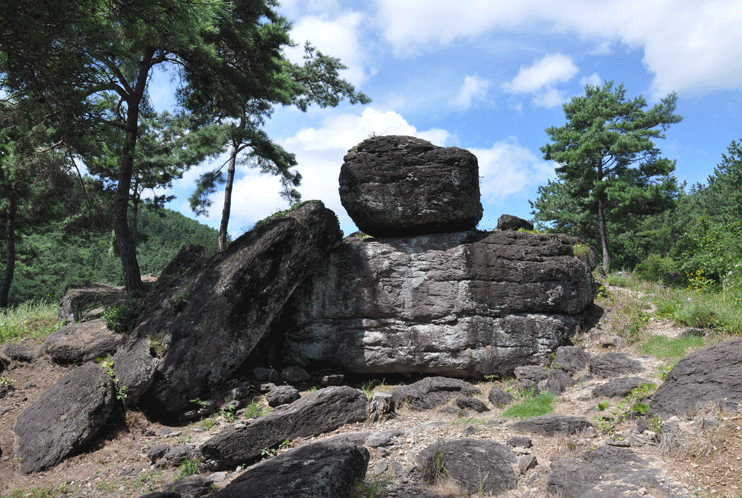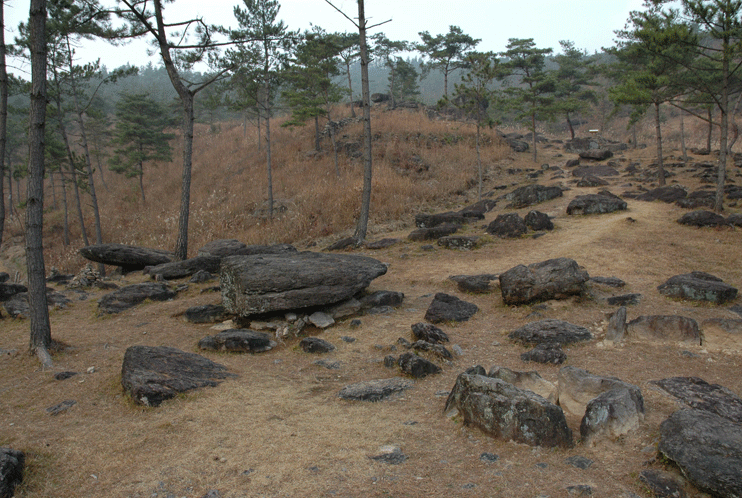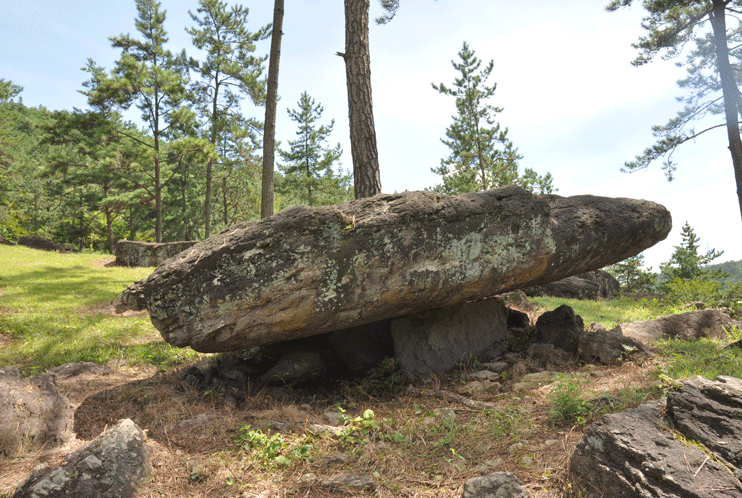Gamtaebawi, located in the north of the path to Bogeomjae hill from Jidong village, is the quarry where dolmen capstones were taken and processed. This rock face is 6 meters long and 2.5 meters high, and has stone wave of 60 cm, whose intensity is low and easy to to quarry. There are many rocks like capstones as detached from the rock face. It is observed that there are many grooves made for detachment and marks left by attempts to try to detatch projectiled parts. Even today, it can be easily separated by applying force by using wedge into the grooves. In adjacent area, fractions of the rock are almost detached as if they were taken away to be used as capstone. The piece of rock placed tiled next to the gigantic rock is because it was moved to this position in preparation for transportation.

Dolmens densely distributed under Gamtaebawi have a wide range of shapes v such as table-typed dolmen with overground stone chamebr and go-table shape with upright supporting stones, and stone covered type with exposed burial chamber.
Oddly shaped capstones are laid right after being quarried and there are stack of stones, which were also taken out. Such context indicates that dolmens were built with stones quarried in the adjacent area. This is the crucial site as for the education center to show the sequence of dolmen construction from quarrying capstones to building dolmens as well as the presence of various dolmen types in one area.

Dolmens No. 23 and 24 damaged by typhoon Bolaven in 2012 were excavated and examined. Excavation revealed that dolmen No. 24 is the table-type dolmen built with a large flat stone slabs and No. 23 is stone covered type with a burial chamber underneath the capstone.

Dolmen No.24 was found with one side wall collapsed and exposed burial chamber of which one long side and short side walls remained as originally constructed. at the time of discovery.
But, pine trees were fallen down by the typhoon, which moved capstones and damaged the burial chamber The size of the dolmen was 450 cm long, 310 cm wide and 73 cm thick and weighs 15 tons. It is a table-type dolmen and a capstone is supported by two large plat stone slabs and one single stone constituting long and short walls. The capstone upon the stone chamber is 140 cm in length, 5 cm in width and 40 cm in height which has a magnificent appearance, being projected 1m~1.7m out of the stone chamber.
This dolmen is a representative table-type dolmen of Hwasun dolmen site together with go-table type dolmen and can be used as a place of education for the public and students.
Polished stone dagger was excavated in Hwasun dolmen for the first time. Stone chamber with a size of 133 cm in length, 46 cm in width and 40 cm in depth was discovered under the capstone of dolmen No.23.
Polished stone dagger with its tip facing upward was excavated in grave room. The length of the polished stone dagger was 12.5cm, that of dagger body was 10.5-10.6cm and elongated groove was carved out on both sides to attach the handle. This polished stone dagger can be used only with the handle attached.